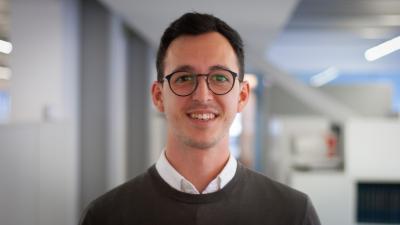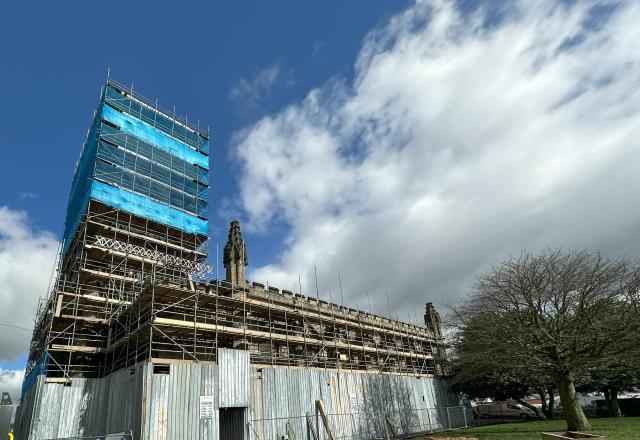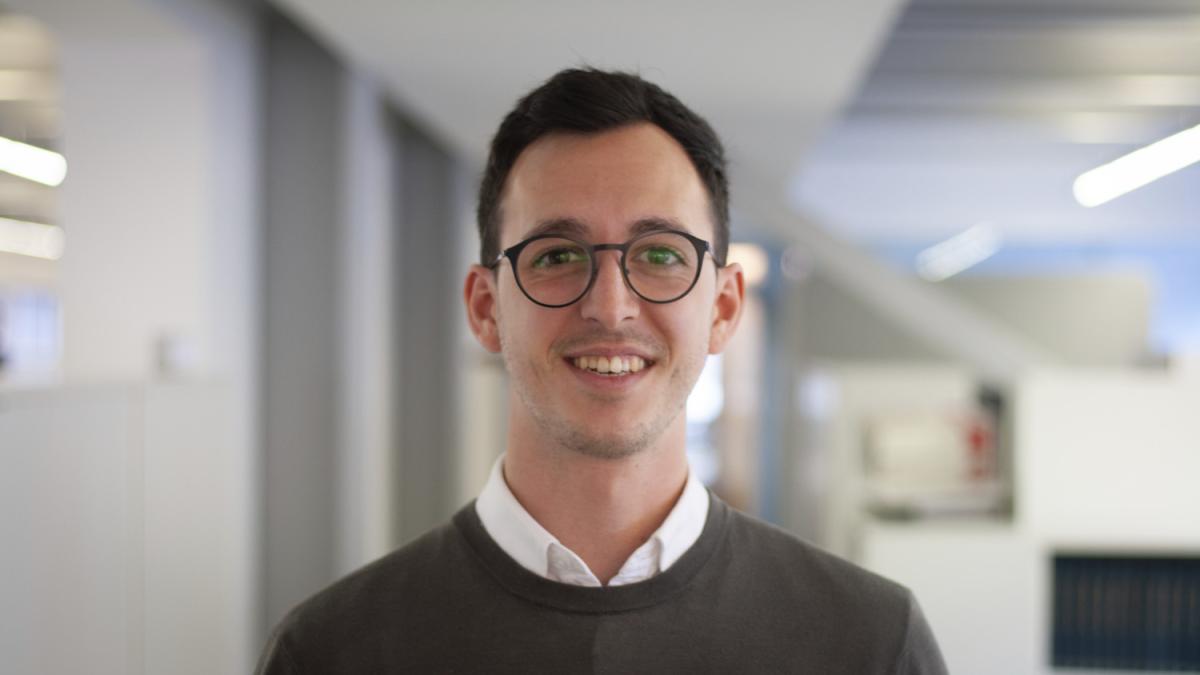
Q: Who or what inspired you to pursue a career in architecture, especially in the heritage/ecclesiastical sector?
Growing up in Dubai during the building boom meant the next ‘megaproject’ was always a topic of conversation. Watching the city grow at pace definitely sparked my interest in the field, but it also shaped the type of architecture I was interested in pursuing - along with the type I wanted to avoid.
Through my undergraduate university years in Liverpool, I had the opportunity to work on a community-driven heritage project, Withington Baths in Manchester, which opened my eyes to adaptive reuse. The project demonstrated the value of restoring and revitalising historic sites, and has been a big influence on the direction of my career since.
I spent my RIBA Part 1 year out with a practice based in North Wales working on the conservation of a former Burton’s high street shop and its adaptive reuse to form a new model of church with a modern approach to worship, focused around performance and events. Many of the themes like enhancing physical and digital accessibility and opening doors to wider audiences continue into the projects I am working on today.
Q: Can you describe some of your current projects and their significance?
Since joining Buttress in 2022, I have been part of the faith team working on both ecclesiastical and secular community projects of all scales and complexities.
We are supporting two projects at Stretford Public Hall, Manchester, at the moment: a fabric repair and energy efficiency upgrade scheme that is progressing on-site, and a feasibility study that is being developed, focused on enhancing the accessibility of the basement to unlock further public uses. The hall is a Grade II listed community centre built in the late 1870s that does a huge amount of work to support local community groups and residents, so contributing to the latest of their multi-phase vision to conserve and restore the building has been really rewarding.
At the same time, we are also delivering a significant phase of conservation work at St. Mark’s Church in Hanley, Stoke. As a post-industrial church, it was built with ferrous metal fixings and cementitious mortar that later led to serious fabric loss and resulted in the church’s listing on the Heritage at Risk Register. The project that nears completion in the new year will alleviate much of the deterioration and allow the church to continue to serve an equally key role in supporting its locality with its food bank and extensive community initiatives.
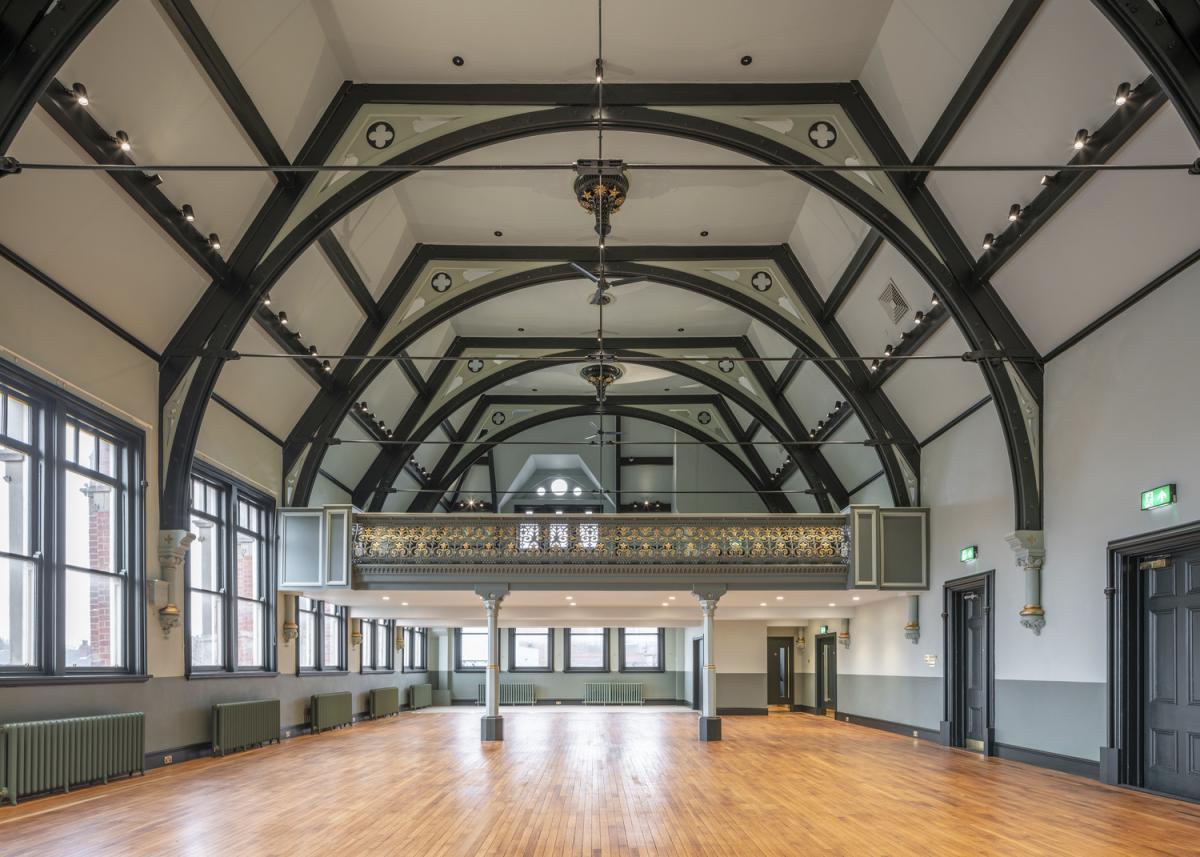
Q: What is your favourite building, and why?
A difficult question. While I was studying for my undergraduate degree in Liverpool, I visited Granby Four Streets. The project was developed with Assemble to conserve and partially adaptively reuse the last remaining Victorian terraces in an area marked for demolition.
The terrazzo fire surrounds they created for each of the houses made from the waste demolition material were a really nice addition, but more broadly, the project was a great example of community-led regeneration. It embodied a commitment to community involvement and, along with the street market and local ceramic workshops, resulted in a strong sense of place.
Q: How has your involvement with RIBA's Future Architects Mentorship Scheme shaped your professional development?
It has been a brilliant experience and really rewarding. Earlier this year we hosted twelve first and second-year undergraduate students for three half-day workshops in the studio and nearby at Mustard Tree. The sessions provided an insight into the workings of a large practice and the type of work we do across the various teams and sectors, including an overview of the work involved in progressing a project from inception through to completion, ending in a building tour of the recently completed Ancoats Dispensary.
The feedback we received to date has all been very positive, so I’m looking forward to continuing and building on the scheme in the new year.
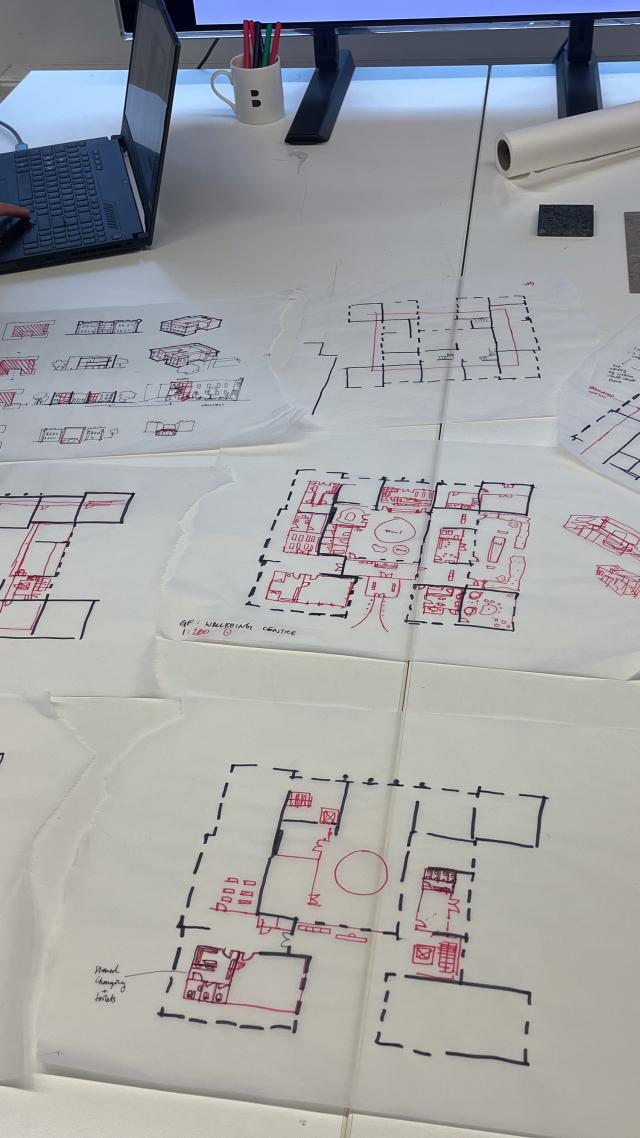
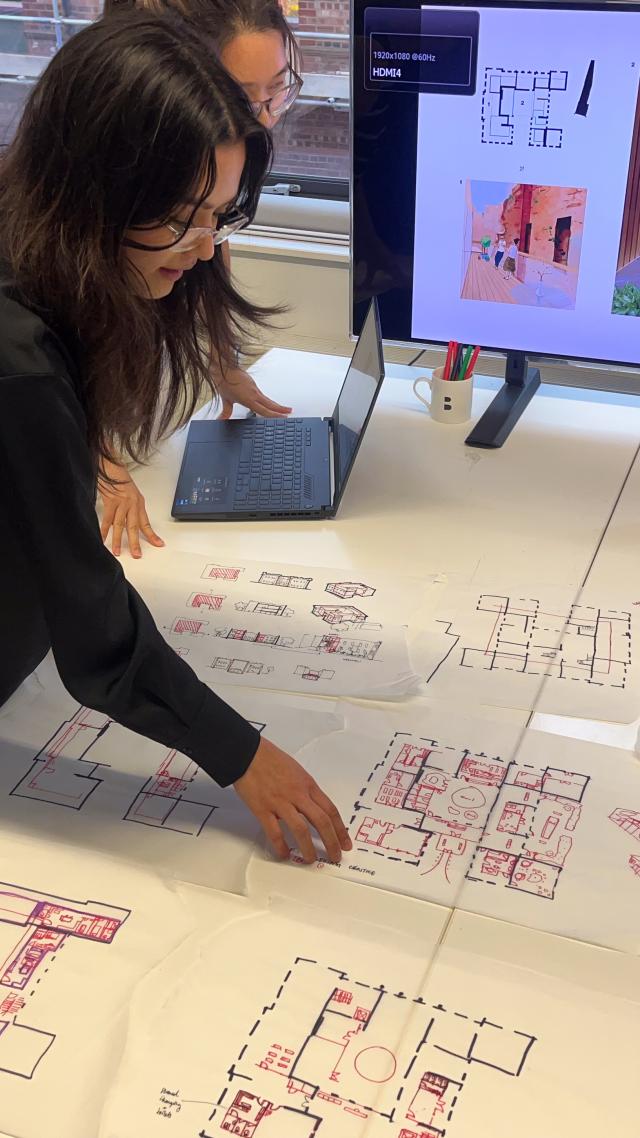
Q: What advice would you give to those considering a career in architecture?
The current pathway to becoming an architect is a long one and can seem quite daunting. I find it helpful to view it as a series of milestones. The subject area is so broad and the type of architecture you are interested in at the start of the seven year+ course will change and develop by the end, but there are plenty of opportunities to shape your academic and career choices to suit your passions in that time.
It is also an exciting point to be coming into the profession with routes to accreditation being re-evaluated, the traditional university pathway being challenged, and alternatives like apprenticeships being on the rise.
Q: What is the best thing about working at Buttress?
The people and support. There is a really strong commitment to developing first-hand experience, so as a RIBA Part 2, this has meant both leading and supporting a really wide range of projects within the arts, culture and heritage sector. There is a great variation in the type of work we do, and with a lot of site-based work, it can range from crawling through basement voids in a listed art gallery to addressing a congregation in a church service.
Overlapping with the project work, the CSR and social value work we do with local schools, colleges, universities and charities is also incredibly rewarding and ties together project work with wider causes.
Q: What do you enjoy doing in your spare time?
I've just finished my RIBA Part 3 accreditation exams, so now that they're done, I’m looking forward to picking up where I left off with wheel-thrown ceramics at a local studio space.
At the moment, it seems the majority of people are training for marathons. I am training for a marathon which will cross Germany, Austria and Switzerland, so I have become well acquainted with the Manchester tarmac.
Cameron Hawkins
Cameron works on a number of significant historic building projects in the practice, alongside leading the work experience programme within the Manchester studio.
Cameron is particularly interested in sustainable design and environmental policy. During his master’s degree, he produced a thesis critically examining the global race to net zero at all scales of enquiry.
